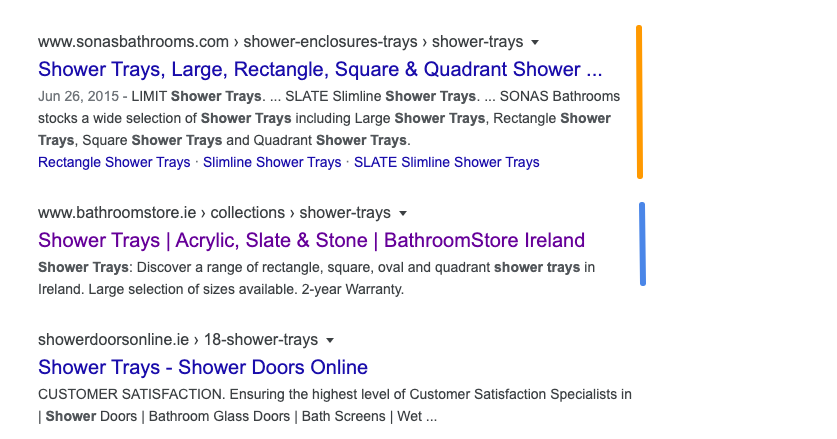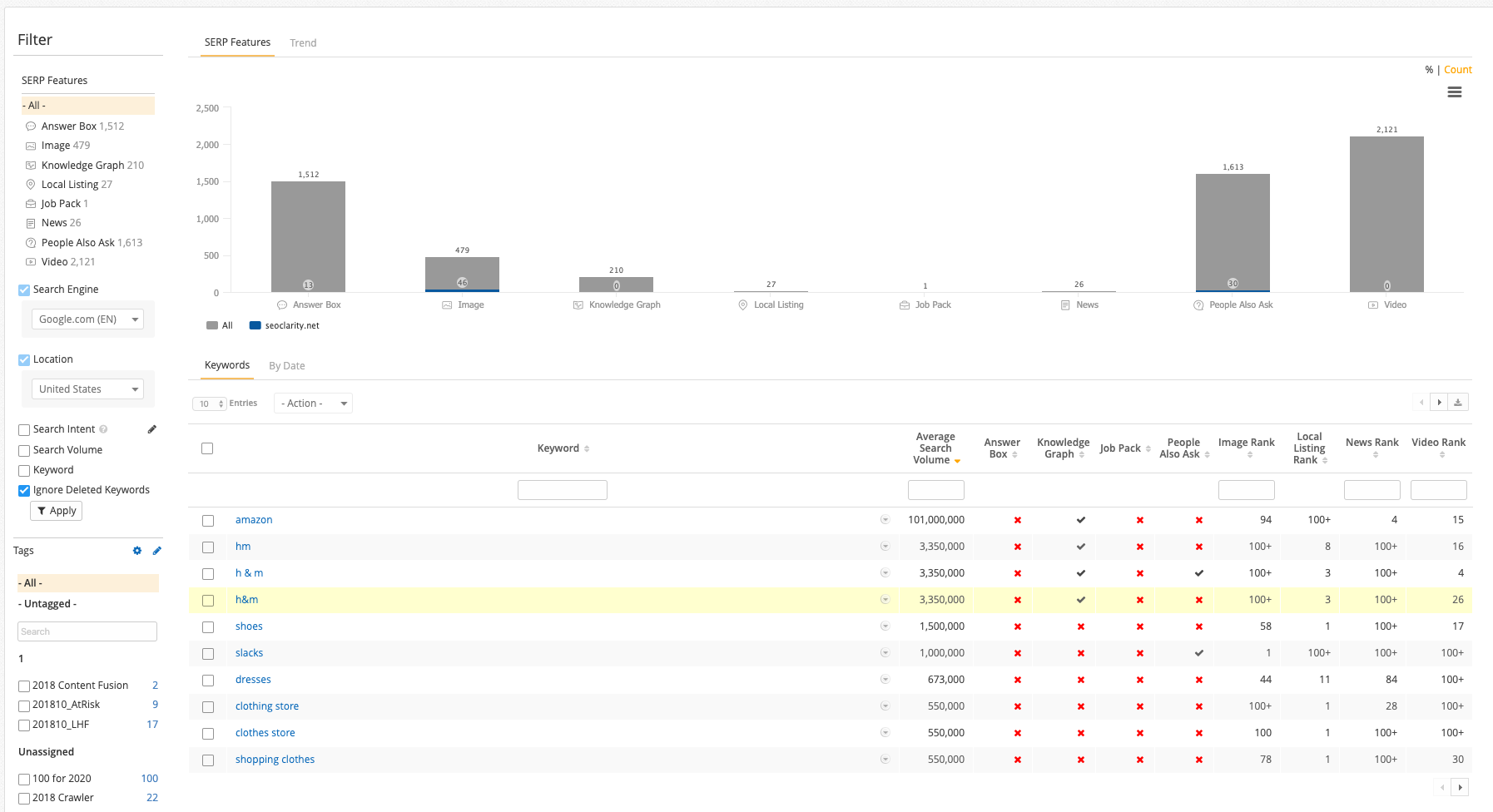Search engine result pages are far from what they used to be, aren’t they?
In our own study, we’ve discovered that there are over 1,200 different and unique features in SERPs. All those additional features affect the ranking positions you’ve grown used to. In many cases, the top organic result appears below multiple SERP features and commercial placements. Sometimes, the result appears below the first (or even the second) fold!
Unfortunately, there is no way to avoid having your rankings and search visibility affected by SERP features. So, what’s left for SEOs to do? My answer - join in. Understand your target SERP and create content that can appear in the SERP featured results.
Key Takeaways
- Modern SEO success depends on optimizing for SERP features, not just traditional organic rankings.
- Visibility is driven by SERP real estate and intent alignment, making rank position alone insufficient.
- Measuring performance requires visibility-based metrics that reflect how users actually experience the SERP.
Table of Contents
- What are SERP Features?
- Do First-Page Rankings Still Matter in Feature-Driven SERPs?
- How to Optimize Website Content for SERP Features
- How to Report On Rankings with SERP Features
What are SERP Features?
SERP means Search Engine Results Page, the full set of results search engines show for a query. It includes ads, blue links, and SERP features like People Also Ask, images, nearby businesses for location-based queries and AI Overviews.
Search engines prioritize direct answers that are condensed, summarized and cited through AI Overviews.
Do First-Page Rankings Still Matter in Feature-Driven SERPs?
Well, I’d love to give a straightforward answer. However, unfortunately, my answer is both YES and NO.
My answer is NO because, as I said above, SERP features are here to stay.
It’s highly unlikely that Google will remove them and go back to just serving the ten-blue links that you could dominate by ranking in high positions and building up the search visibility.
However, my answer is also YES.
I realize that I contradict myself, but I have a good argument for that. You see, we can also regain high search visibility because we can aim to appear in the SERP features. That, in turn, is guaranteed to increase our search visibility, and drive further brand exposure in the SERPs.
To understand why I gave both answers, we need to look at the problem from Google's perspective.
To the search engine, introducing more SERP features and AI responses makes sense.
Think about it! Google learns from its users. It constantly analyzes user behavior, searching for the best ways to deliver on its promise to give users the information they need.
It’s no surprise that AI results and SERP features are part of organic search results.
Now, what does that mean to us SEOs?
Well, for one, it means that we need to think in the exact same way as Google, if we want to dominate search visibility and drive our brands’ exposure in SERPs.
Since Google considers AI Overviews, popular products, a local pack, top stories, images, videos and hundreds of other SERP features as more valuable to users, then, we need to ensure that our content appears in those too.
There is one other change we have to make to adapt - We must look at ranking positions differently.
Traditionally, we’ve analyzed rankings based on a domain’s exact position in the organic search results.
However, rank positions do not reveal WHERE the site appears on the SERP exactly, and how much visibility it actually has.
Consider this example. Note how for a simple commercial query like "baby dolls", the search engine delivers ads, the local pack, the People Also Ask section, product listings and top stories. As a result, organic search listings have been pushed below the first fold.
.png?width=800&name=screencapture-google-search-2020-04-22-21_43_17-edit%20(1).png)
Notice how some of the organic results above include more information than others.
Many rank trackers still report performance based on the organic listing’s order. They’d calculate the position the domain has and determine that this is its rank position.
But as you see from the screenshot above, that’s hardly the case.
What’s more, they’d discount another critical factor, the amount of space the listing takes on a page. Because, a listing enriched with Schema (as shown below in a SERP for the term shower trays, for example) is more visible than one with just the basic title and description.

Needless to say, that amount of space the listing takes (including any inclusion in SERP features) makes the domain more visible and increases its click-through rate.
Let’s get back to this issue in a moment, though because there is another important factor we need to consider.
How to Optimize Website Content for SERP Features
Let me be upfront about something - there is no guaranteed way to secure SERP features. No magic trick or hack exists that can turn your content into an absolutely obvious choice to be featured there.
But, there is a way for you to increase your content's chances of appearing in SERP features — identifying and matching the user intent for the query.
#1. Identify Which of Your Keywords Trigger SERP Features
Start by reviewing which of your managed keywords trigger SERP features. You can do this in the platform by accessing our new SERP Feature capability.

With this data, you can quickly tell which features show up the most for your keyword set.
This will give you the full understanding of the SERP in your space, and what features you need to target. For example, if the majority of keywords show images and videos, then these are the two features that you should start obtaining. If, on the other hand, you see Reviews or AI Overviews being featured prominently, then focus on optimizing your content for them first.
#2. Evaluate Your SERP Features’ Visibility
The same capability - SERP Feature - allows you to evaluate your domain’s visibility in SERP features.

From this report, you can quickly assess which queries to focus on to drive further brand visibility in the SERP.
With this data, you can start prioritizing keywords that you’ll be working on.
Recommended Reading: Are SERP Features Taking Over Your Search Results?
Here are some tips on how to rank in featured snippets. Please note, for the purpose of this guide, I’m only including a high-level overview of the process.
- Uncover the intent behind those keywords
- Learn more about the intent behind the query as well
- Optimize the existing content to match the information above, and add relevant Schema markup or other data to optimize it for the relevant SERP feature.
This last point might require some explanation. Remember, your goal is to push existing content into a relevant SERP feature. Doing so will require you to optimize the page for that relevant snippet.
For example, if you target the answer box, you might need to...
- Include more information that’s relevant to the intent behind the query.
- Change the content’s format to include information Google could include in the answer box.
How to Report On Rankings with SERP Features
There is one more problem we must address. It relates to something we’ve begun discussing already - how can we report on ranking positions where the said position no longer determines visibility?
As we’ve established already, your page might appear below the fold in spite of technically ranking on position 1. At the same time, another organic listing further down the page might be getting more clicks just because it occupies a larger real estate.
So how should SEOs adapt?
Well, we’ve been working hard at identifying the best way to report on rankings today, and found the solution in Visibility Share.
Visibility Share replaces monitoring rankings by the domain’s position on the list of organic listings with evaluating how much real estate it takes on the SERPs page.
This allows you to establish the actual effect a particular placement on the page (including the appearance in the SERP features) has on your visibility, and correlates that with other metrics like click-through rate. In doing so, you can gain the fullest picture of your site’s visibility, and also, identify where you should be putting the most effort when it comes to boosting the search visibility.
<<This post was originally published in April 2020 and has since been updated.>>



.png?width=140&name=Untitled%20design%20(10).png)


Comments
Currently, there are no comments. Be the first to post one!